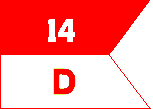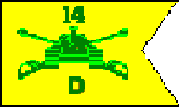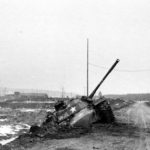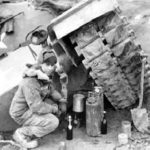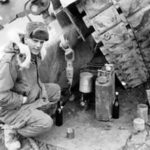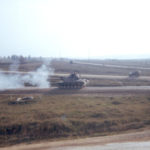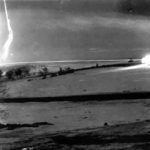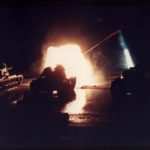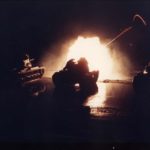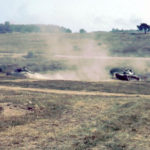At Last, a Cavalryman!
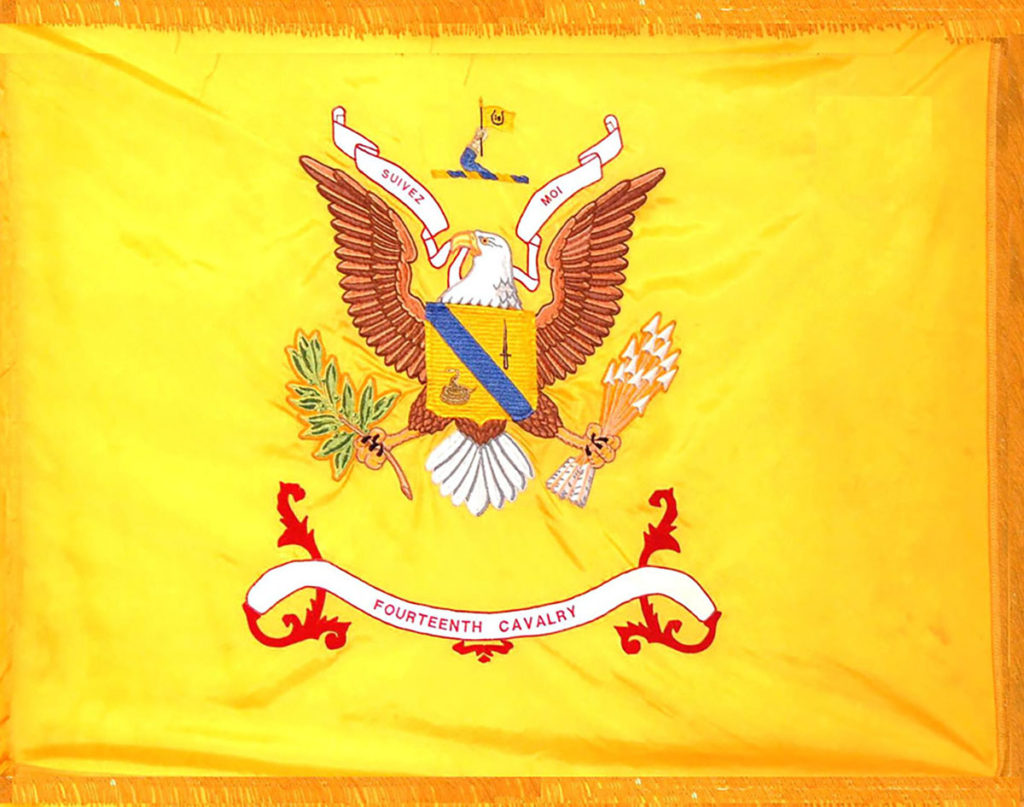
After nearly five years in the Army, I was finally assigned to a cavalry unit — the 14th Armored Cavalry in Fulda Germany. The 3½ years I spent in this unit were absolutely the best years of my life up to and including now.
Dave Faulk, Larry Steinke and I had been reassigned from the 1st Battalion, 34th Armor to the 1st Squadron, 14th Armored Cavalry. We sailed from Bayonne, New Jersey to Bremerhaven, Germany. While waiting for the train to take us from Bremerhaven to Fulda, Larry introduced us to German bier at a nearby gasthaus. The bier (beer) was 12% alcohol which we weren’t used to. Although a bit tipsy, we managed to board the train and get off at Fulda.
There was a sign with a number to call, which we did. About a half hour later a 2½ ton truck pulled up to take us to Downs Barracks.
Dave and I were assigned to D Troop and Larry was assigned to C Troop. The squadron was deployed on a NATO field training exercise named Wintershield II.
We had a couple of days to wait until we could join our units in their field locations, so we took the time to explore Fulda, and many of its gashouse’s.
I was assigned as the assistant tank commander on the 3rd platoon leader’s tank, D-31. I actually functioned as his gunner. This meant I could only see my surroundings through a periscope.
One of first things I noticed was that we were carrying our full load of 64 rounds of 90mm ammunition as well as ammunition for our machine guns and pistols. I had never before been on a tank carrying live ammunition, except when on a tank gunnery range.
On the second or third day, D Troop was in the attack when, all of a sudden, the tank abruptly stopped and were listing hard right. We had broken through the edge of the new road and were absolutely stuck. They tried to pull us out with five tanks, but to no avail. So, my driver and I were stranded for the next three days awaiting rescue. Click on the pictures below to enlarge them.
I was without my family because President Eisenhower had stopped dependent travel out of concern for the gold flow As time went by, I grew more concerned about my wife. When I left Washington State, my wife was nearly ready to give birth to our first child. I received a letter saying she was on the way to the hospital and — not another word for the next four days. I went to the Deutsches Post where I could telephone the States. I called and, although the connection wasn’t very good, I found out I had a baby girl named Deborah or Debra (I forgot to ask how the name was spelled. I also misheard the weight and thought I had a seven pound girl.
The newly elected president Kennedy ended the travel restriction. Of course there was a huge backlog so Marilee and Debbie couldn’t join me until August.
During the seven months waiting for my family to join me, I lived in the barracks. A standout memory of mine was that we had a live bugler, not a recording as is common throughout the Army. It was almost romantic to hear tattoo sounded at 10pm and taps at 11.
Most people think soldiers get up at reveille. Not so. We were awakened and got up at First Call and in formation to salute the flag as it was raised at Reveille . At 5pm Retreat was sounded, a 105mm Howitzer was fired, followed by To The Colors as the flag was lowered.
Then, there special occasions such as when the V Corps commander visited for an inspection tour. The regimental and 1st Squadron commanders with their staffs and all 1st Squadron troops would assemble on the parade field. When the corps commander arrived, the band played 3 Ruffles and Flourishes (one for each of his stars), followed by the National Anthem. We were so proud.
Marilee and Debbie arrived in August following a long and tiring trip. Chuck Riley took me to Frankfurt to pick them up and return us to Haimbach, just outside of Fulda and within walking distance of the post. Our first residence was a couple of rooms upstairs in a German farmhouse. One had to go through the barn to get to the bathroom, but the landlord was really nice.
When not engaged in vehicle maintenance and classes, we spent a lot of time training. Among the training areas we went to were Wildflecken, Hohenfels, Bergen-Hohne, and Grafenwöhr.
Wildflecken was the closest, but we were limited to machine gun and small-arms ranges. We went to Bergen-Hohne once, which at the time was a British base where we could fire our 90mm guns on known-distance ranges. For the full range of maneuver and gunnery training, Grafenwöhr was the place. It was at Graf that we went through the Tank Crew Qualification Course (TCQC). Each tank crew went through TCQC both day and night. It was a tough course and only a few of our crews qualified with the M48A2 tank. With the M60A1, that replaced the M48A2, all of our crews qualified, mainly due to a better fire control system.
Below are various pictures of our training, including the TCQC course at Grafenwöhr. I’ve included an audio file of a tank firing from inside the tank. You will notice a clanging after the gun fires—that is the brass being ejected onto the turret floor, followed by the noise of a fan that expels the gasses.
